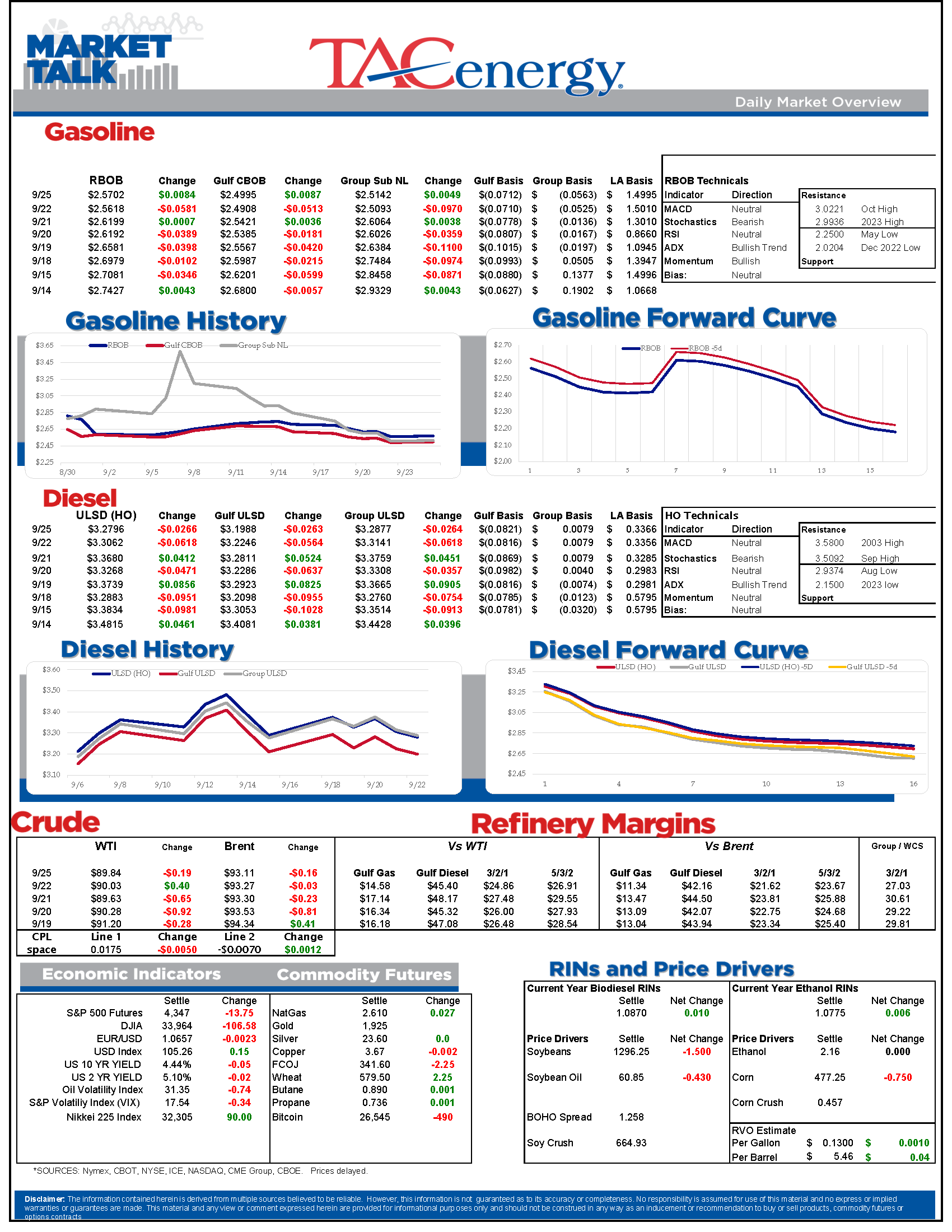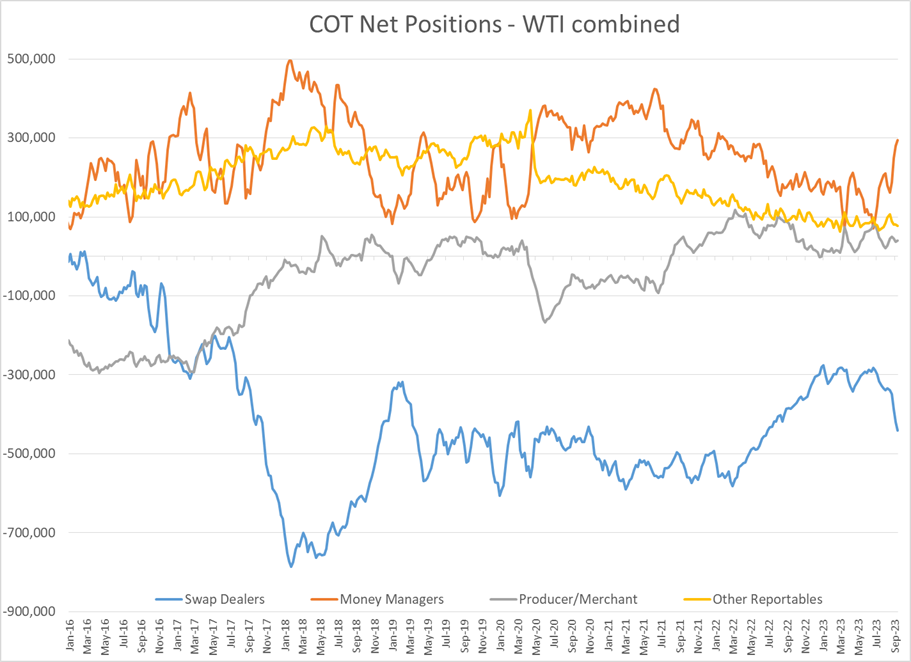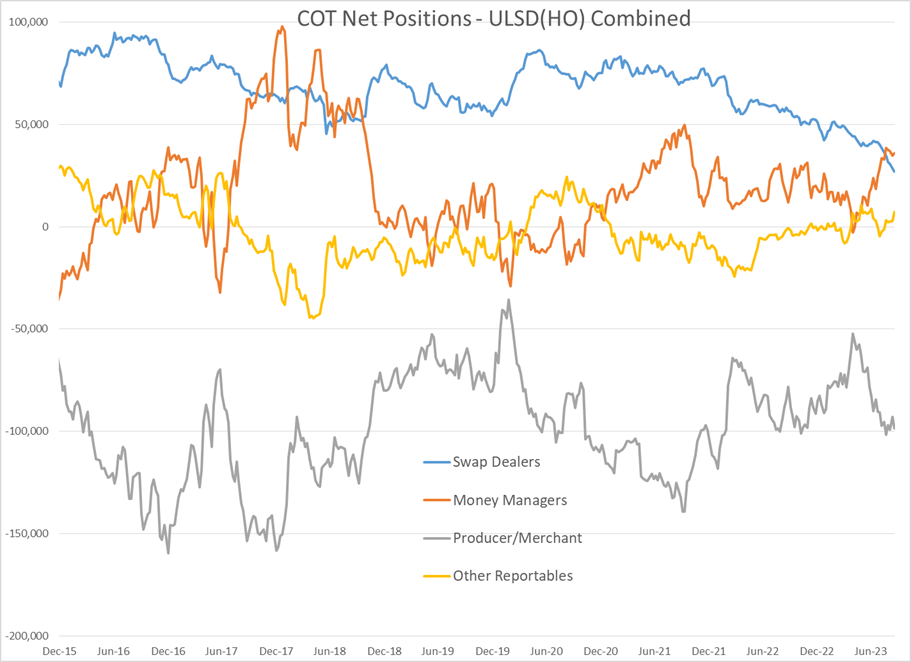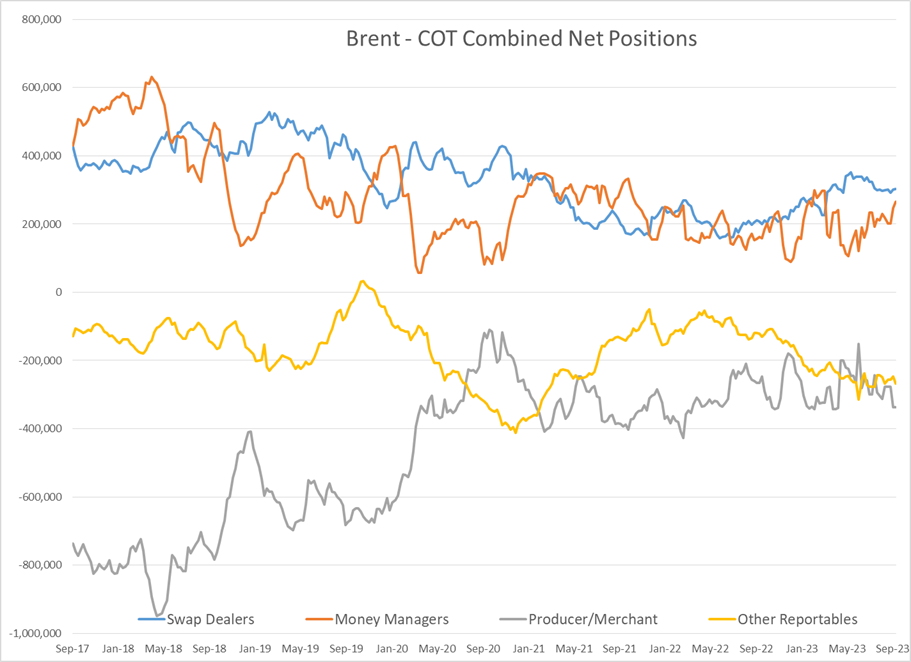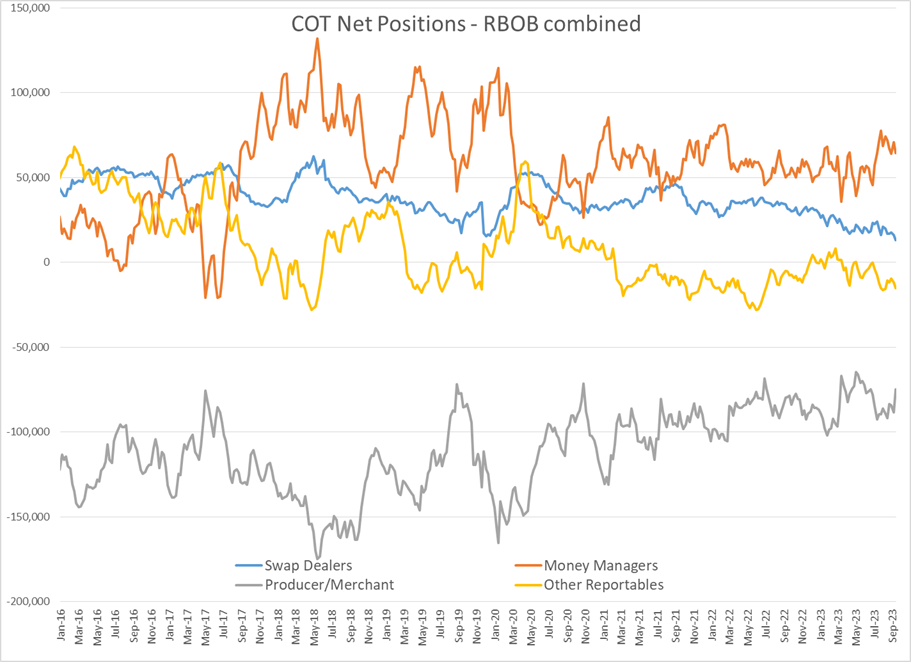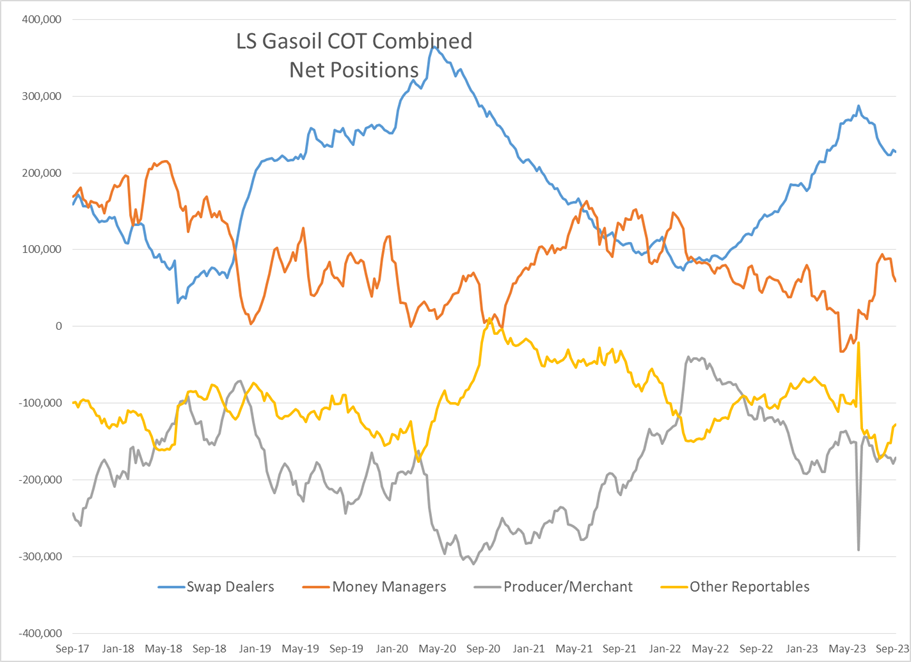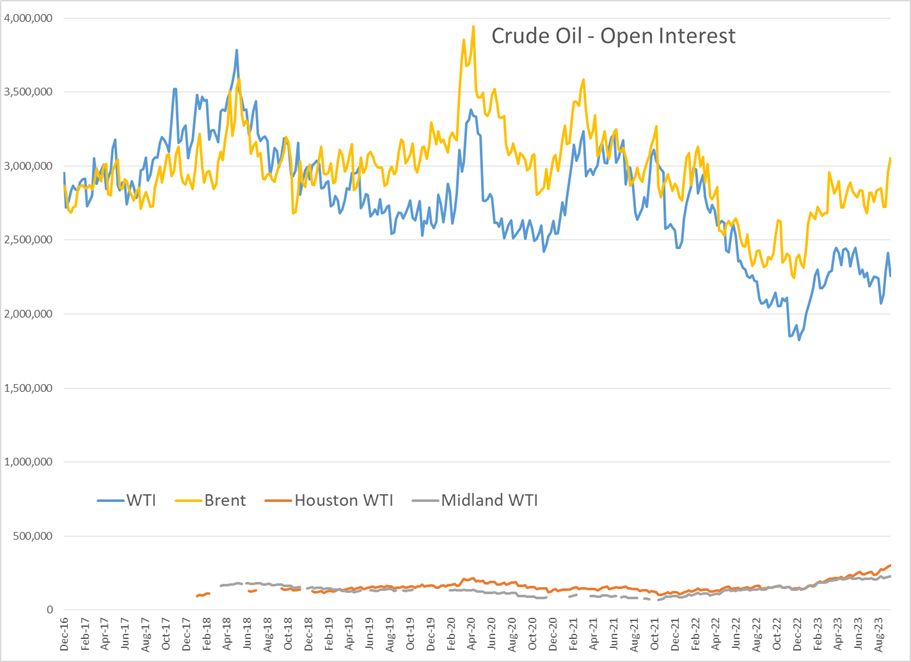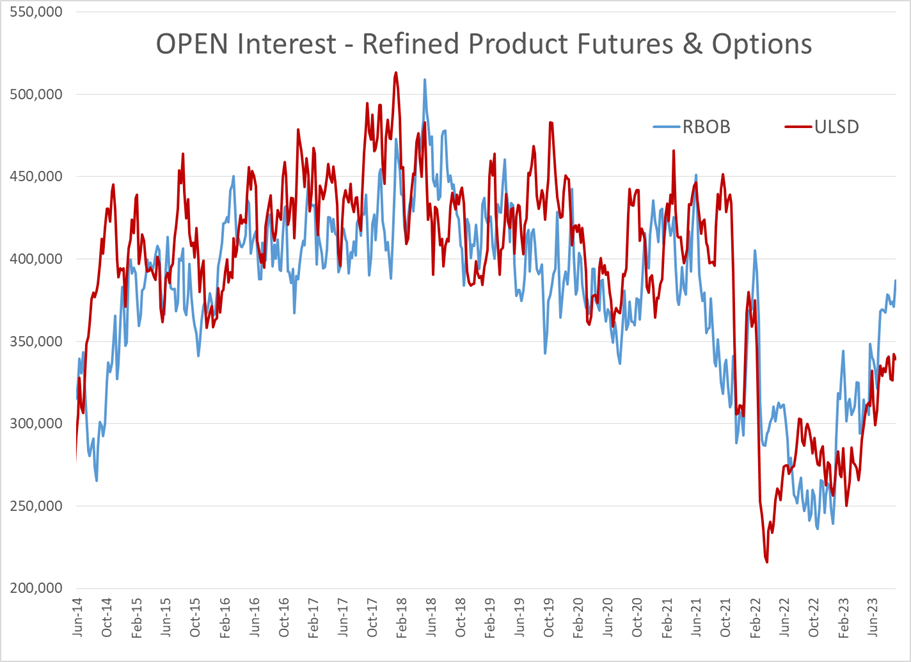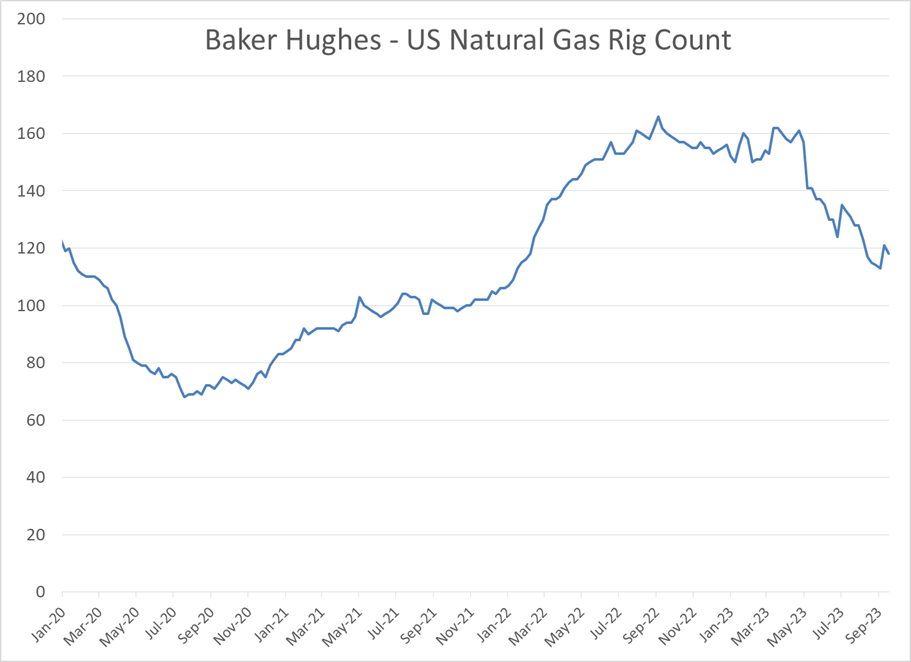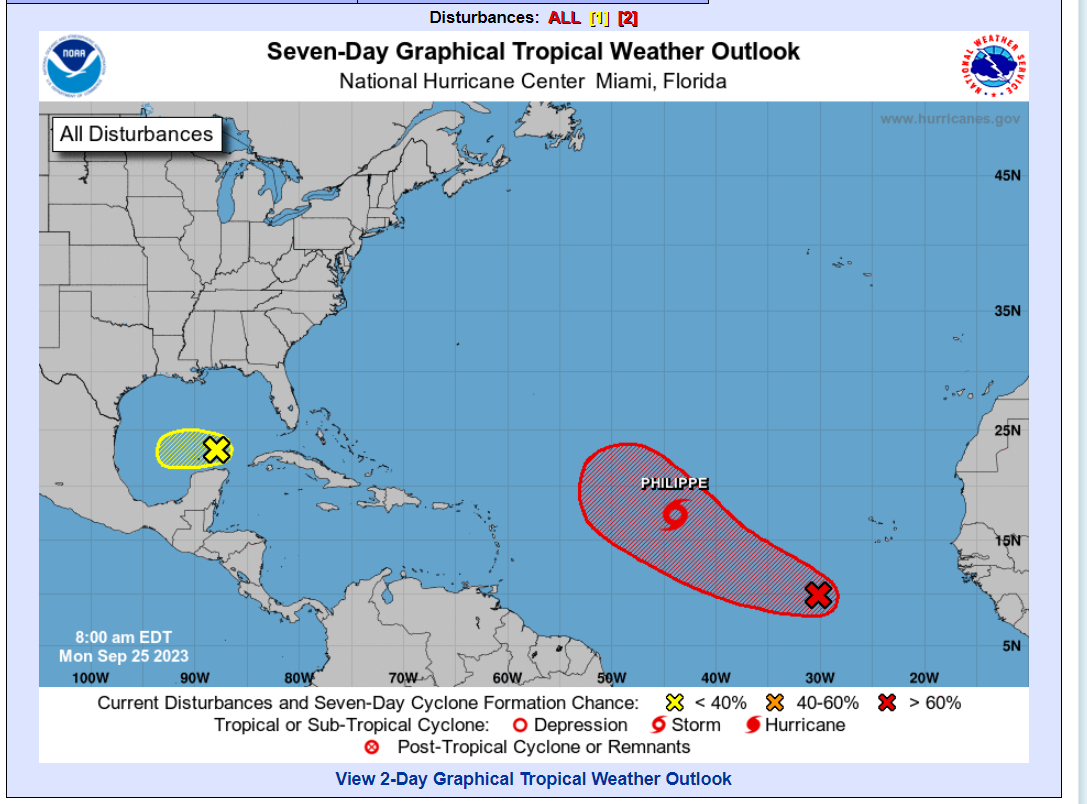New Tropical Storm Formed Over the Weekend And Several More Refinery Upsets Reported

The energy rally lost its momentum last week, and we’re seeing chart support tested in early Monday trading as a result. ULSD is leading the move lower so far this morning and is threatening a break of its weekly trend-line around the $3.30 range. Prices are currently trading below that line, and if we see a settlement below that level the charts favor a push towards the $3 mark. There’s also about 7-cents of backwardation between the October and November contracts, so the technical pressure will only increase as we approach October’s expiration Friday.
For RBOB we’re seeing a test of the September lows around $2.55 this morning, with a break of that support setting up a 10-cent slide in short order, with a run at $2.25 looking likely as we move deeper into fall.
Money managers showed a mixed reaction to energy markets last week with large speculators adding to bets on higher prices in WTI, Brent and ULSD, while reducing their positions in RBOB and Gasoil. The net length held by money managers in WTI contracts reached its highest level since February of 2022 last week, while Brent saw its speculative length reach a 6-month high. The drop in gasoil positioning is noteworthy as it is counter-seasonal, whereas the decline in RBOB bets and increase in ULSD are more what we’d expect to see this time of year as driving activity slows and heating demand starts to increase.
Baker Hughes reported a decline of 8 oil rigs and 3 natural gas rigs last week, bringing the total to a fresh 19-month low. So far, the steady decline in drilling activity hasn’t impacted domestic oil production in the official numbers, although there’s plenty of noise relating to what the EIA classifies as oil vs condensate to make accurate historical comparisons challenging. The big question for the balance of the year is whether or not $90 oil brings drillers back to the rigs?
After Ophelia battered the East Coast over the weekend, Tropical Storm Philippe has formed in the Atlantic – the 12th named storm in the past 5 weeks - but is expected to hook north and east similar to what we saw Nigel do last week, and not threaten the US coast. There’s another storm system given 80% odds of developing in the next week in the same area, but early models suggest it too will stay out to sea. There’s another system being watched in the Gulf of Mexico, but it’s only given 10% odds of developing by the NHC.
There were several more refinery upsets reported over the past few days. An unplanned flaring event reported at Chevron’s Los Angeles area refinery late Friday promises to keep the West Coast basis rollercoaster rolling as we wind down the summer-RVP season, while upsets at Valero’s plant in Corpus Christi, another in a string of upsets at the P66 facility in Borger TX, and an unplanned shutdown of the Delek facility in Tyler TX have all failed to stir any buying interest. Of course, it seems like we can’t go an entire week without a reported upset at the beleaguered Marathon refinery in Texas City, with a coker unit at that facility tripping offline Friday.
Click here to download a PDF of today's TACenergy Market Talk.
News & Views
View All
Energy Prices Found A Temporary Floor After Hitting New Multi-Month Lows Wednesday
Energy prices found a temporary floor after hitting new multi-month lows Wednesday morning as a rally to record highs in US equity markets and a modestly bullish DOE report both seemed to encourage buyers to step back into the ring.
RBOB and ULSD futures both bounced more than 6 cents off of their morning lows, following a CPI report that eased inflation fears and boosted hopes for the stock market’s obsession of the FED cutting interest rates. Even though the correlation between energy prices and equities and currencies has been weak lately, the spillover effect on the bidding was clear from the timing of the moves Wednesday.
The DOE’s weekly report seemed to add to the optimism seen in equity markets as healthy increases in the government’s demand estimates kept product inventories from building despite increased refinery runs.
PADD 3 diesel stocks dropped after large increases in each of the past 3 weeks pushed inventories from the low end of their seasonal range to average levels. PADD 2 inventories remain well above average which helps explain the slump in mid-continent basis values over the past week. Diesel demand showed a nice recovery on the week and would actually be above the 5 year average if the 5% or so of US consumption that’s transitioned to RD was included in these figures.
Gasoline inventories are following typical seasonal patterns except on the West Coast where a surge in imports helped inventories recover for a 3rd straight week following April’s big basis rally.
Refiners for the most part are also following the seasonal script, ramping up output as we approach the peak driving demand season which unofficially kicks off in 10 days. PADD 2 refiners didn’t seem to be learning any lessons from last year’s basis collapse and rapidly increased run rates last week, which is another contributor to the weakness in midwestern cash markets. One difference this year for PADD 2 refiners is the new Transmountain pipeline system has eroded some of their buying advantage for Canadian crude grades, although those spreads so far haven’t shrunk as much as some had feared.
Meanwhile, wildfires are threatening Canada’s largest oil sands hub Ft. McMurray Alberta, and more than 6,000 people have been forced to evacuate the area. So far no production disruptions have been reported, but you may recall that fires in this region shut in more than 1 million barrels/day of production in 2016, which helped oil prices recover from their slump below $30/barrel.
California’s Air Resources Board announced it was indefinitely delaying its latest California Carbon Allowance (CCA) auction – in the middle of the auction - due to technical difficulties, with no word yet from the agency when bidders’ security payments will be returned, which is pretty much a nice microcosm for the entire Cap & Trade program those credits enable.

Week 19 - US DOE Inventory Recap

Another Wave Of Selling Pushed Energy Futures To Fresh Multi-Month Lows On Tuesday
The search for a bottom continues after another wave of selling pushed energy futures to fresh multi-month lows on Tuesday. While most of the futures complex remains on the edge of a technical breakdown, we still haven’t seen the snowball effect of selling that signals the bulls (or more likely their trading algorithms) have finally thrown in the towel.
The most important technical test of the day comes from the RBOB futures contract that managed a modest bounce off of its 200-day moving average Tuesday, and could make a case for a recovery rally if it’s able to sustain a move higher from here. If that layer of support breaks however, there’s not much on the charts to prevent another 20 cents of losses.
We’re seeing a bit of the opposite reaction this morning to the May CPI report that came in just below expectations than we did yesterday when the PPI report showed inflation was still running hot. Both refined products added a penny in the first few minutes following the report, tagging along with a bounce in US equity futures. The annual inflation rate from the CPI came in at 3.4%, which is still well above the FED’s target of 2%, but the monthly rate of .3% was slightly lower than many estimates around .4%. Both the PPI and CPI reports showed the spring rally in fuel prices leading the tick up in inflation, which give us good reason to believe we’ll see lower numbers in June now that both gasoline and diesel futures have dropped 40 cents from their April highs.
ULSD futures hit their lowest level since July 5th of last year, which was just before the contract rallied more than $1/gallon in the next two months. Physical traders are also acting bearish on diesel contracts with more heavy selling in the LA and Group 3 markets which dropped to 14 cent discounts to futures Tuesday, but were left in the dust by Chicago values that collapsed to a 30 cent discount.
The latest crash in Chicago diesel basis combined with futures trading near a 10 month low pushed cash prices to the lowest level we’ve seen since December 2021, offering a seasonally unusual opportunity for those that are still waiting to lock in their fuel price for the next year.
The diesel overhang is also witnessed in the ongoing collapse in California LCFS credit values which reached an 8 year low Tuesday at $45/MT yesterday, down from $140/MT just over 2 years ago. The drop in LCFS values combined with last year’s collapse in RINs and the upcoming change to the blender’s tax credit has already caused the closure of a few biodiesel plants, a re-conversion of a refinery back to traditional fuels, and then Tuesday the world’s largest RD producer issued a profit warning due to a continued decrease in both diesel prices, and the subsidies for renewables. For those that lived through the early days of the ethanol industry that included multiple cycles of bankruptcies and frequent regulation changes wreaking havoc, this cycle on the diesel side of the barrel feels oddly similar.
The IEA continues to bang a bearish drum to try and counteract OPEC’s bullishness in their monthly reports, citing weak demand in Europe as a driver of OECD nations moving into fuel consumption contraction in the first quarter of 2024. The tax-payer funded agency also acknowledged the drop in refinery margins in April as the distillate glut continues across much of the world, while also noting that refinery run rates are set to increase further in the back half of the year. The report also noted that even if OPEC & Friends (now Rebranded as DoC) maintain their output cuts through 2025, growth in output from the US, Guyana, Canada and Brazil will be enough to keep world supply outpacing demand.
RIN prices got a quick bounce this week after a Federal Court denied a refinery suit against the EPA’s RFS rules for 2020-2022, but already gave back those gains yesterday, with D4 and D6 values holding around the $.45/RIN mark, down slightly from this time last year when they were worth about $1.50.
Click here to download a PDF of today's TACenergy Market Talk.

